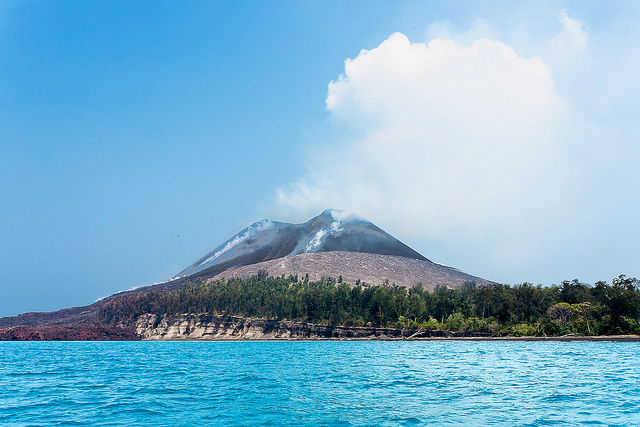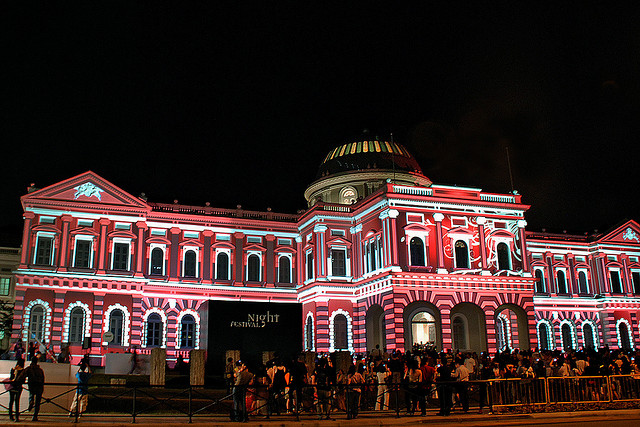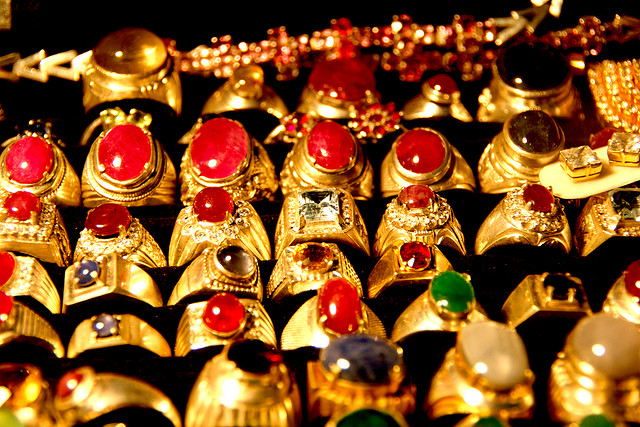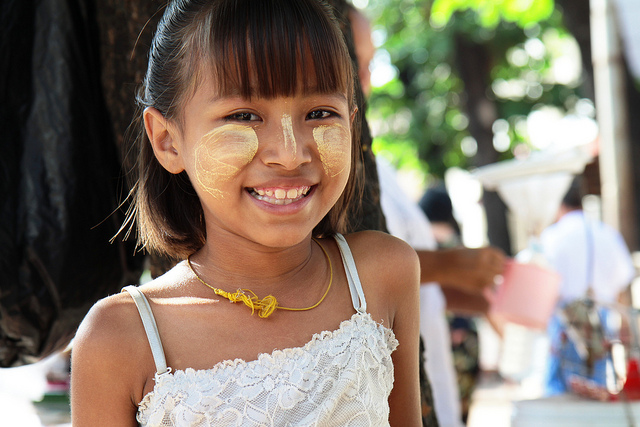The Inle Lake Region of Burma is not only aesthetically compelling, it is also historically important. The lake is the site of the deeply revered Buddhist site Phaung Daw Oo (variantly Hpaung Daw U) Pagoda which houses five gilded images of Buddha of different sizes that are no longer discernible (as Buddhas) because they have been covered with thousands of gold leaves over time.
The fluvial procession that takes place during the waxing of the moon until three days after the full moon of Thadingyut (from September to October) and takes these images around the stilted villages of Inle Lake is the Phaung Daw Oo Pagoda Festival. It is widely attended by thousands of devotees from the Shan state and around country. Because of Burma’s isolation in recent years, the Phaung Daw Oo Pagoda Festival is one of Southeast Asian festivals that mirror the people’s authentic celebration of their faith and local culture, an apt and colorful introduction to any travel to Myanmar.
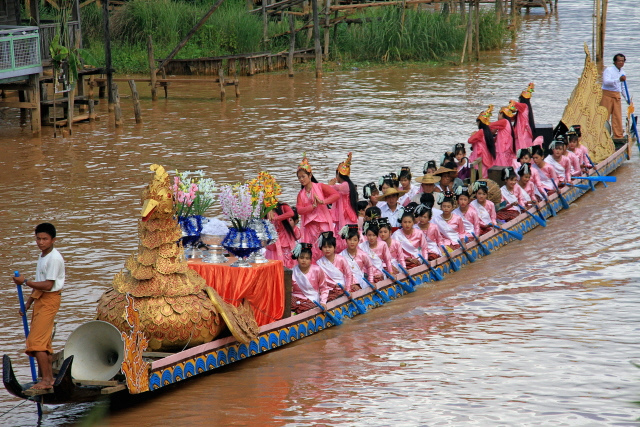
The Phaung Daw Oo Pagoda Festival 2013 will start on October 5 and end on October 22.
Fluvial Parade of Gold-Leaf Covered Images of Buddha
On the occasion of the festival, four out of five Buddha images are taken out of the pagoda for a fluvial procession. The fifth image is left behind to guard their resting places in the pagoda.
Each of the four images are placed on elaborate pagoda replicas aboard a barge that looks like a mystical goose or swan.
These elaborate barges are then towed by boatloads of famous Inle Lake leg-rowers in a clockwise fashion along the shores of the lake, making an impressive spectacle by the sheer immensity of the procession and the ornately decorated vessels. The gold-leaf covered images – which are themselves made of pure gold and very heavy – usually make lunch stops and even stay the night at the main temple of the villages along the shores of Inle Lake to allow people to pay homage to these holiest of Buddha images. The entire procession takes 18 days to complete.
Unique Boat Races of Leg-Rowers
The procession concludes as the images arrive back at the Phaung Daw Oo Monastery and received by a Myanmar government official (a role taken by a Shan royalty in the past). Many pilgrims travel far and wide to venerate these images as they arrive, but only male worshippers are allowed to cover the Buddha with gold leaf.
The last day of the festival is also celebrated with boat races near the home pagoda and participated by both men and women in their traditional costumes. These boat races are unique because rowers use their legs to propel the boat, much in the same way they do when they are out fishing in Inle Lake.
